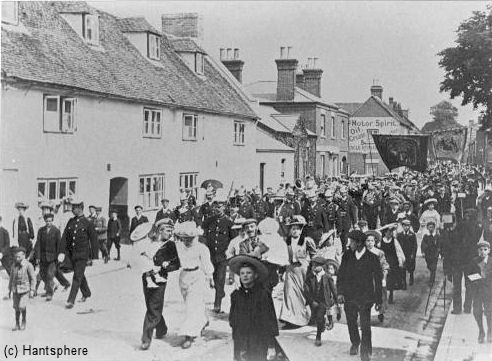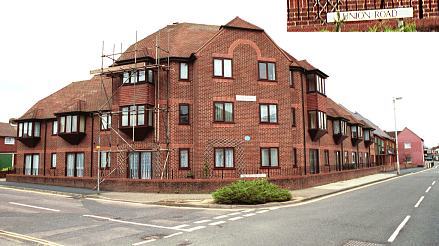Havant, Hampshire
Up to 1834
A parliamentary report of 1777 recorded parish workhouses in operation at Havant (for up to 50 inmates), Bedhampton (15), and Warblington (30).
In 1801, the Havant workhouse was described aS follows:
The poor-house is far from being an uncomfortable place, though I fear it is not kept under a judicious system, for the paupers are dissatisfied with their treatment, and claim redress; there are about fifty paupers now residing in it, including aged people, women, and children. There was a few years ago a manufactory of sacks carried on by such as were able to work, and it lessened the annual assessments; but of late it has been discontinued, to the detriment of the parish and encouragement of idleness; for at present but little work is done by any, save the children, who are too young to evade the orders of the governor; the old men hang over the fire day after day, and study to avoid the most trifling labour. It has been the practice to admit women who have left their husbands, to expiate the crime of infidelity and debauchery, at a time when they were labouring under their diseases.
There are however some women employed in knitting and making up linen; the children sweep the street before the house, and are initiated in a course of idleness which may attend them through life
In 1817, it was reported that:
The poor house is a large old building at the lower end of the West- street. In 1814, it was occupied by 8 men, 12 women, 12 boys, and 12 girls.
The boys and girls pick oakum, when any employment of this kind can be had; at other times go to farmer's work. The oldest boy, 14 years old, generally at service before that age: the oldest girl, 17 years old, but being a cripple, still remains in the house.
A person in the house employed to teach the boys and girls to read, the usual number of hours every day.
The men and women live in separate apartments: are allowed for breakfast, bread and cheese, and beer. Dinner—meat six days in the week, alternately hot and cold; and on Thursday, a bread and cheese dinner. Supper—bread and cheese, and beer.
A master and mistress to superintend are allowed £30, per annum, and house room and provision, and fire and candle.
According to White's 1878 Directory and History of Hampshire the Havant workhouse was built (or perhaps rebuilt) in 1819.
The Farlington parish workhouse stood on Swiss Road, Waterlooville. It later became the Waterloo Laundry, and is now the site of an Asda supermarket.
After 1834
Havant Poor Law Union was formed on 27th May 1835. Its operation was overseen by an elected Board of Guardians, 10 in number, representing its 6 constituent parishes as listed below (figures in brackets indicate numbers of Guardians if more than one):
Hampshire: Bedhampton, Farlington, Havant (3), North Hayling, South Hayling, Warblington (3).
The population falling within the union at the 1831 census had been 6,398 with parishes ranging in size from North Hayling (population 294) to Warblington (2,118) and Havant itself (2,083). The average annual poor-rate expenditure for the period 1832-35 had been £4,975 or 15s.7d. per head of the population.
The new Havant Union took over the existing Havant parish workhouse and in 1836 the Poor Law Commissioners authorized the sum of £900 for its enlargement. The building had a simple T-shaped layout, presumably accommodating males in one wing and females in the other with kitchen and dining-hall at the centre rear. The workhouse location and layout are shown on the 1932 map below, by which time it had become known as a Poor Law Institution.

Havant workhouse site, 1909.

Havant union workhouse (left of picture) 1912.
© Hampshire Library & Information Service.
The workhouse building was demolished before 1960 and modern flats occupy the site. The only reminder of the workhouse's existence is the street sign for Union Road.

Havant former workhouse site from the west, 2001.
© Peter Higginbotham.
Staff
Inmates
Records
Note: many repositories impose a closure period of up to 100 years for records identifying individuals. Before travelling a long distance, always check that the records you want to consult will be available.
- Hampshire Record Office, Sussex Street, Winchester SO23 8TH. Holdings: Guardians' minute books (1856-1930).
Bibliography
- Butler, William (1817) The Hundred of Bosmere
- Gilpin, William (1801) in The Hampshire Repository (vol 2.)
- West, Robert (2015) The Havant Union Workhouse (Free download)
Links
- None.
Unless otherwise indicated, this page () is copyright Peter Higginbotham. Contents may not be reproduced without permission.


